If you like mild, sweet fish with tender flesh, you’ll love poached rainbow trout. I’ve made them twice this week. The first time I learned a few things, which I’ll discuss below. The second time was to take photos for this post as the overcast weather we’ve been having made kitchen photos difficult. I didn’t mind the extra trip to the market and eating trout two days in a row was no hardship!
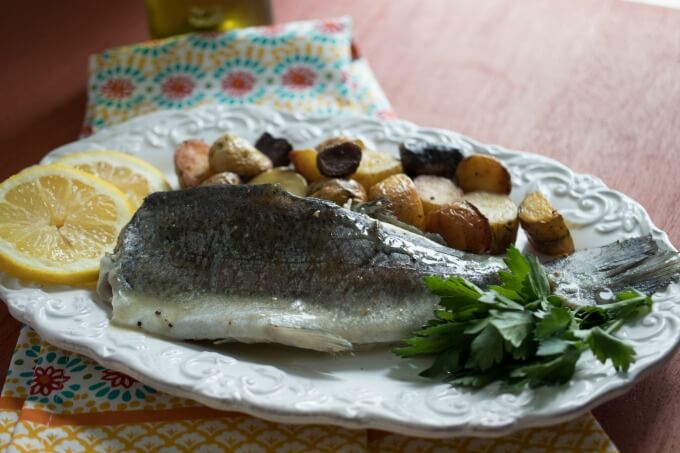
Learning this technique is part of the reason I have been excited to cook from Eric Ripert’s recipes with the bloggers of I Heart Cooking Clubs. Rick and I eat a lot of seafood, and the Spanish markets are loaded with a wide variety of fresh fish, mollusks and shellfish. There’s a much greater variety than I seem to be able to find in my part of Maryland, sadly. Other than simple preparations, I don’t have much experience dealing with whole fish but I’m eager to learn.
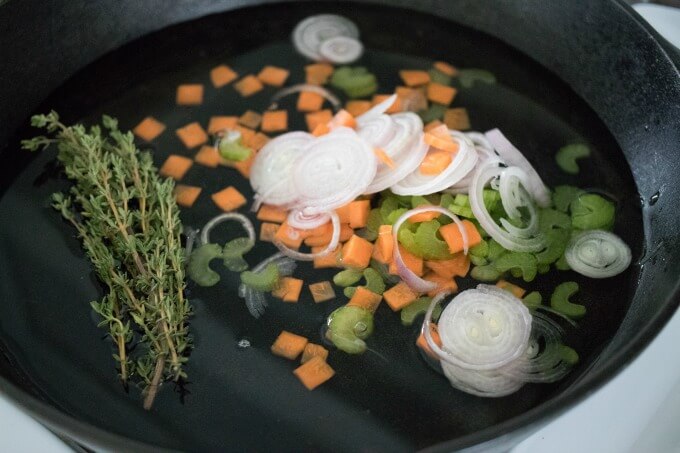
Buy fresh trout from your favorite fish market, making sure the eyes are clear and the skin isn’t damaged. It should smell fresh. My trout still had the heads on, but the market had already cleaned them so they were ready to cook. Well, almost. I learned after cooking the first batch that it’s better to remove the heads before poaching them. They fit better in my large skillet, for one thing. Probably more important to me, if you leave the heads on the eyes turn an unappealing milky color as they cook. Not something you want staring up at you from your plate! A pair of kitchen shears or a sharp knife is useful for this part. I didn’t trim the fins or tails, maybe I should have? Like I mentioned, dealing with whole fish is a new experience for me. I did try to make the “neck” look neat.

Another useful tool is a fish turner, a wide, slotted spatula that’s very flexible. It’s helpful for turning a large fish or filet without tearing the tender flesh. If, like me, you don’t have one (yet), use the largest spatula you have along with another to help turn and transfer your fish.
The poaching liquid is what’s known as a court bouillon, a very simple broth comprised of carrots, onions and celery along with some herbs and a splash of something acidic like wine or vinegar. After a brief simmer, the prepared trout is placed in the liquid where it cooks through fairly quickly. In Eric Ripert’s version of poached trout, the court bouillon is strained after the fish is removed and used as the base for a butter pan sauce to complement the fish. This is where I learned my second lesson.
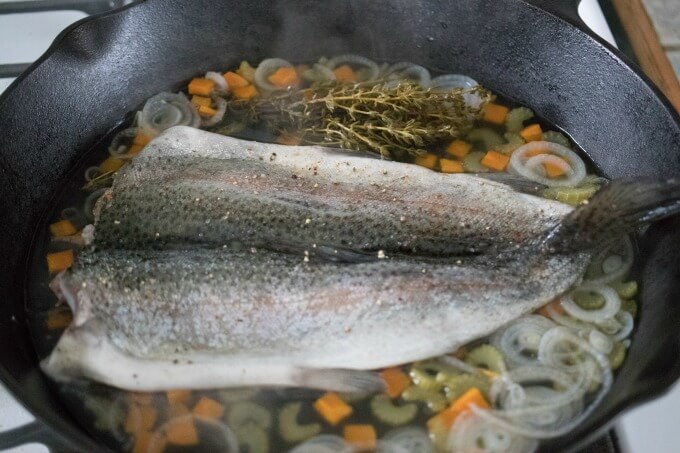
The first time I made this, I didn’t follow the instructions to whisk the butter constantly in the liquid. I was too busy dealing with the potatoes I had roasting in the oven and a very curious dog who constantly had to be shooed out of the way. My butter browned a little too much and while the sauce tasted good, it wasn’t very pretty. When I prepared the fish for the blog, I fried the leftover potatoes in a little olive oil before poaching the trout and was able to pay more attention to the sauce, albeit while straddling the dog.
The only substitutions I made was to use shallots instead of spring onions, and rice vinegar for sherry vinegar. According to the Stone Soup blog, rice vinegar has a similar flavor and acidity to sherry vinegar, and I happened to have some in the cupboard. A white balsamic might be worth a try, too, especially for an oilier fish. Otherwise, your favorite wine vinegar or even good old apple cider vinegar would work.
You’ll find the original recipe for Poached Lake Trout on the Food Network’s website.

Ingredients
- 1 whole trout cleaned, per person
- 2 cups water
- 1/4 cup rice vinegar (look in the Asian food section of the store)
- 1 shallot peeled and sliced thin
- 1 medium carrot peeled and sliced thin
- 1 celery rid sliced thin
- several sprigs of thyme
- 5 tablespoons butter cut into chunks
- 2 teaspoons salt
- 1 teaspoon ground black pepper
- 1/2 teaspoon ground cayenne pepper
Instructions
- Mix the salt, pepper and cayenne together in a small bowl. Set aside until needed.
- Start the court bouillon by measuring the water and rice vinegar into a skillet large enough to hold the fish. Add the sliced vegetables and thyme, then cover the skillet with a lid and bring to a steady simmer. Cook for at least 10 minutes.
- While the court bouillon is simmering, gently rinse the fish under cool water and remove the heads. Season the fish inside and out with the seasoning blend. You won't need all of the seasoning.
- When ready to begin poaching, open the fish and place it skin side up into the court bouillon. It doesn't have to be submerged and you can cook several at the same time, depending on the size of the pan. (You don't have to open the fish if there's no room in the skillet. In that case, turn the fish about halfway through to cook both sides evenly.)
- Cover the skillet with a lid and cook for 7 - 8 minutes until the fish is just cooked through. You should be able to see the flesh has changed color and texture.
- Gently remove the fish to a platter to rest while you make the sauce.
- Strain the court bouillon and measure a 1/2 cup of the liquid (You should have a little extra.)
- Return the liquid to the skillet and begin whisking in the butter, a piece at a time. Whisk constantly over low heat to prevent the butter from browning. Season to taste with salt and pepper (I used some of the remaining seasoning.)
- To serve, carefully arrange the trout on a plate and spoon the sauce over top. It's not a big deal if the trout breaks apart while moving it. It's just prettier if you can manage to keep the shape.
I didn’t eat the skin of the trout, although you can. My rule is if the flesh comes off easily I don’t eat the skin unless it’s crispy. Call me crazy.

I’m sharing this recipe with the bloggers of I Heart Cooking Clubs where this week the challenge was to prepare a seafood recipe from Eric Ripert.


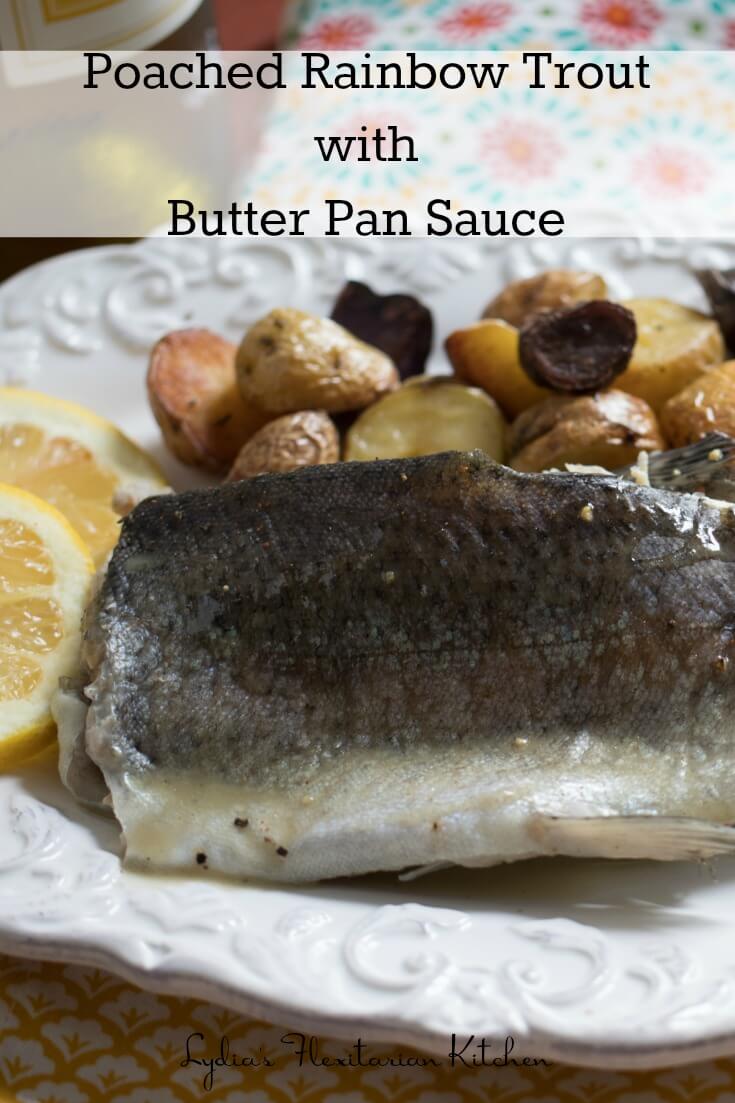
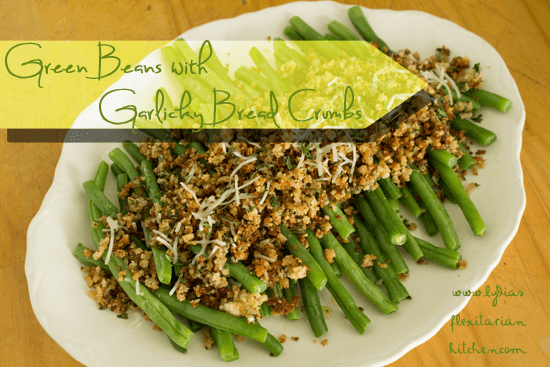
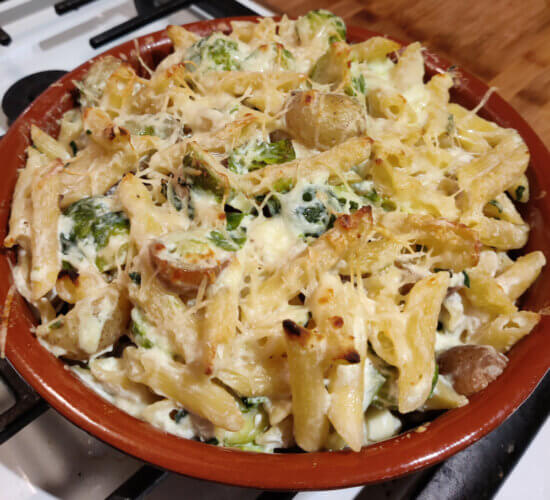
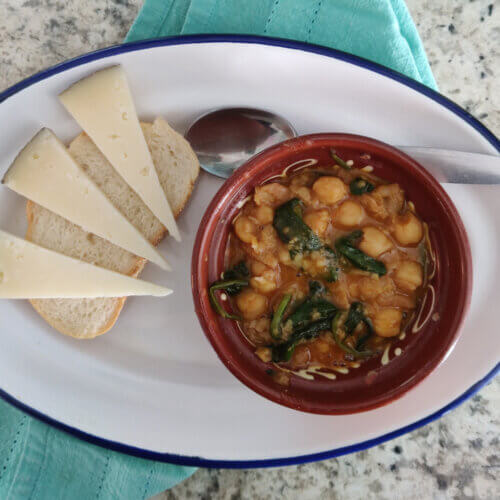
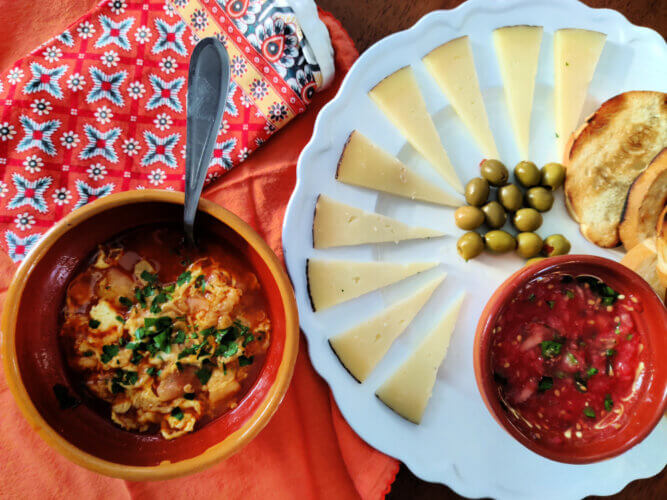
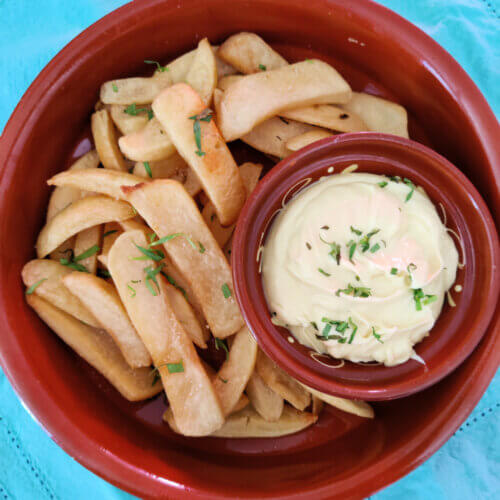

What a lovely blog you have. Mouthwatering, one might say. I saw the photo of the rainbow trout and was whisked away to my childhood when our family would vacation at a lodge in southern Colorado. My dad would fish for rainbow trout and then we would eat them prepared on the campfire. Surely with a more primitive recipe than yours but so tasty.
Thank you for stopping by my blog. Holler if you would like to do an Instant Pot post together!!
It’s wonderful how often food reminds us of something pleasant. Thanks for sharing your memories with us!
I really enjoyed reading your post. I’ve never cooked a whole fish before either and it was fun to read through your tips. I especially loved the part about making the neck look neat! Ha ha! I have to say that I would also cut the head off because the milky eyes would really mess with me. This really looks, and sounds, delicious! I would love to give it a try one day (assuming I find a good fish market in landlocked Kentucky)!
When I was growing up, my father always took care of preparing any fish we caught for cooking. It’s a good skill to learn and I’m working up to it.
Poaching is such an easy way to cook fish! Not foolproof, but you have a bit more leeway when it comes to timing. Great looking dish! Thanks.